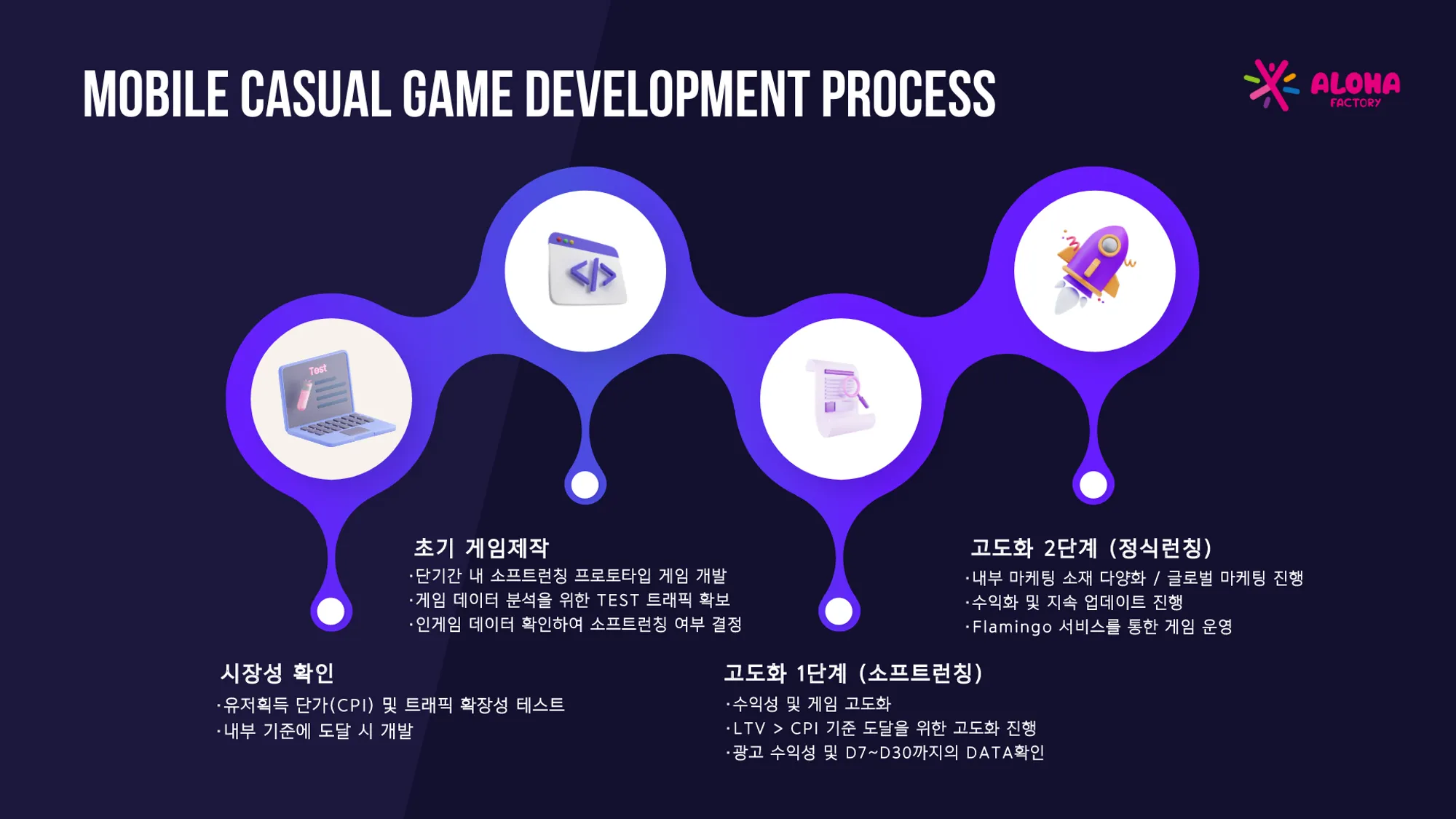In the previous post, we introduced a case study on how Aloha Factory achieves successful results in the global market through a systematic manufacturing process.
Aloha Factory goes through marketability test - fun QA process, which not only draws data-based insights in the initial game test process, but also plays the game from the user's point of view and discovers improvements in the game by expert group.
Aloha Factory recognizes the difficulties small studios face in the game development process, and expands and operates production support programs to not only internal studios but also external studios. As a publisher, in addition to monetization and marketing, we also provide Fun QA as a support program along with production guides through data analysis in terms of production.
What is Game Quality Test?
The game quality test refers to the process of checking and giving feedback in detail to the fun elements and emotional parts that actual users feel while playing the game. This process includes a review of game balance such as the speed of content consumption and difficulty, BM elements, and UI/UX of the game.
Above all, in order to create a foundation for a game that users can enjoy for a long time, it is important to solidify the user experience at the initial user entry point and expand the content. It can be seen as a task to create a favorable impression, positive image, and interest in the game in the early stages so that the content produced with great effort can reach as many users as possible.
In the name of Fun QA, Aloha Factory regularly conducts game quality tests for games scheduled for internal release and games to be published. We are trying to form meaningful feedback to improve game quality by classifying and checking items that game planning and development experts can intensively check and items for non-production occupations who enjoy games lightly.
Fun QA by Aloha Factory production process
In the game quality test, the items to focus on vary depending on the level of development the game is currently in.
In the initial step of testing the game's marketability, we focus on the initial experience of users entering the game for the first time and being aware of and interested in the game. In this step, the impression of the game right after entering, the intuitiveness of the tutorial and game, the level of immersion in the game, and the level of understanding of the mechanics are intensively checked.
There are various factors that determine the user's impression at the beginning after installing the game. Numerous exits may occur in the middle, from the intro screen that users experience immediately after entering, learning the game through tutorials, and playing the game in earnest. By figuring out the detailed cause with Fun QA along with quantified numerical data for these parts, we minimize the churn of imported users and improve them so that they can settle into the game.
In particular, it is important to ensure that users understand and play the game's goals and core loops. The core loop may be different for each genre of game, but a structure that allows users to play repeatedly for a long time should be formed by giving the user the experience of failure and success through appropriate hurdles in the process of presenting goals and playing, and growing through this. do.
TIP: Essential Checklist for Reliable Onboarding of Your Game!
There are also cases that test stages beyond the early game. In this step, we focus on in-game content checks.
After the initial settlement, when playing a certain part, we check whether the game is sufficiently immersed in the content and whether the gimmick and content sufficiently enhance the fun of the game.
In the subsequent upgrading stage, we focus on testing whether the content is growing well based on the growth factors of the game, whether there are repeatable factors, and whether the BM design is designed well enough to attract users' attention.
TIP: Checklist for mid-game and beyond!
At Aloha Factory, we focus on these areas to create pre-question items, receive feedback through intensive play with the same build, and improve the game quickly to prepare for the next stage of testing. Through the game quality QA introduced in this posting, we expect the success of a game that can be played for a long time by users in the market.
Want to know more about how to improve your game with data and expert Fun QA?
 Aloha Factory Publishing
Aloha Factory Publishing

_(3).png&blockId=6bb9a1eb-8168-473d-a338-0f096be72298&width=3600)
